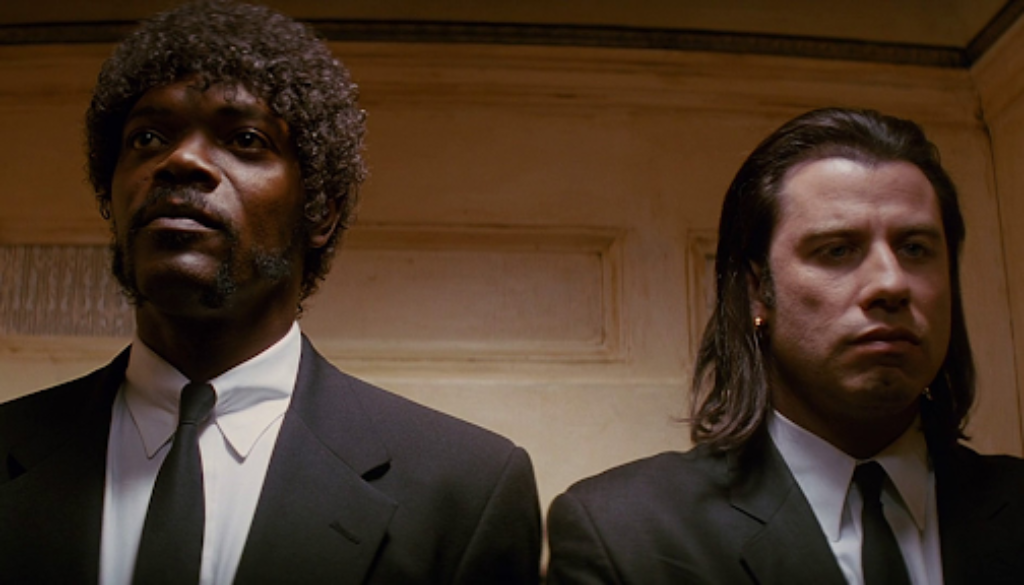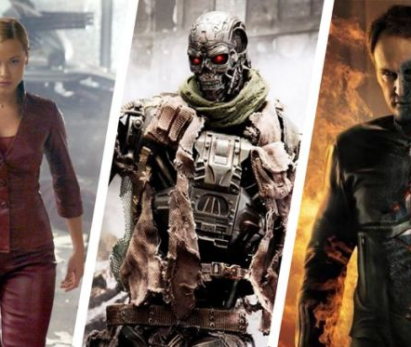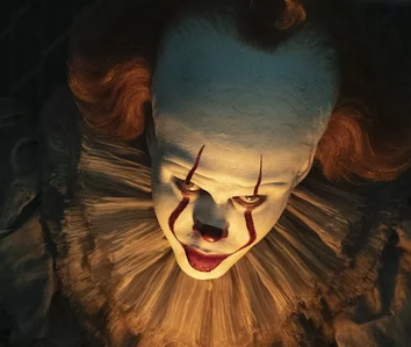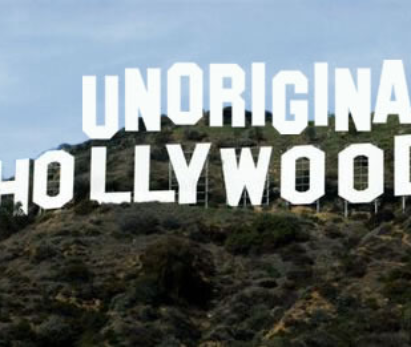An Unforgettable Film Era: The 1990’s
If we take a look into history, we can see the nature of film unfold ever so gracefully. From the beginning of film, occurring over 100 years ago, to the insanely realistic effects we are able to watch through streaming services today, there is a great amount of appreciation to be had. The nature of film in its first days was very much theatrical, taking inspiration from an industry booming with theatrical performances. The theatrical industry being live performance plays and musicals. Today, the performances happening on screen are extremely intimate with the audience. The actors strive to replicate real-life behavior, and have strayed away from the type of acting we see on Broadway.
From Broadway to the Big Screen
The reason for this transition from overly dramatic performances to the replication of real life behavior is due to the change in how film is viewed. Before, movies were meant to be viewed by large audiences in a theater setting. When performing for a large number of people, motions and words must be exaggerated so that the entire audience can understand what is happening on screen. Today, most of the film we consume is from the comfort of our homes. Viewing film in theater is more so for the ambiance, and less about necessity. Due to this transition, the nature of acting has followed suit. Performances done by actors are far more personal and intimate with the viewer, making their characters mimic everyday behavior. This also makes film more relatable, and viewers are more likely to empathize with the characters on screen.
A Stroll Down Memory Lane
One of the most iconic films from the 1990’s film era is Quentin Tarantino’s Pulp Fiction (1994), starring John Travolta, Samuel L. Jackson, and Uma Thurman. This twisted Los Angeles crime film would go on to win numerous awards, and even be recognized as the “best film ever made” by critics during this time. The use of dark humor, combined with harsh violence, is something that Tarantino would later be known for in the film industry. Additionally, the plot of the film did not follow chronological order, the way most films do. This, too, made the nature of the film so very unique. Each actor executed the taboo script flawlessly, and it is no wonder this film is known today for being one of the most iconic of its time.
![]() Another memorable film of this time was Poetic Justice (1993), starring legendary Janet Jackson and Tupac Shakur. This story is based on two lovers (Justice and Lucky) who deepen their love through mutually tragic past experiences. This film reached #1 in the box office within 2 days of being released, and would proceed to being nominated for several awards. In 2012, Kendrick Lamar would even release a song titled Poetic Justice inspired by the film, showing the lasting impact it has had. This movie was released just 3 years before the tragic murder of Tupac Shakur (may his soul rest in peace). Today, we can call upon this film to watch him execute his talents as an actor, on top of being known as “the greatest rapper of all time.”
Another memorable film of this time was Poetic Justice (1993), starring legendary Janet Jackson and Tupac Shakur. This story is based on two lovers (Justice and Lucky) who deepen their love through mutually tragic past experiences. This film reached #1 in the box office within 2 days of being released, and would proceed to being nominated for several awards. In 2012, Kendrick Lamar would even release a song titled Poetic Justice inspired by the film, showing the lasting impact it has had. This movie was released just 3 years before the tragic murder of Tupac Shakur (may his soul rest in peace). Today, we can call upon this film to watch him execute his talents as an actor, on top of being known as “the greatest rapper of all time.”
![]() One of my personal favorite movies gracing the screen during this time was Good Will Hunting (1997), starring Robin Williams, Matt Damon, Ben Affleck, and Minnie Driver. A troubled young man from Boston named Will begins receiving praise for his underlying genius mathematical abilities, and even finds love. However, he is unable to accept the praise, or the love, due to his deeply traumatic past as an orphan. The indefinitely remembered soul, Robin Williams, starred as Will’s psychiatrist and mentor guiding him through his trauma. This film would go on to be nominated for nine Academy Awards, and Williams would win Best Supporting Actor.
One of my personal favorite movies gracing the screen during this time was Good Will Hunting (1997), starring Robin Williams, Matt Damon, Ben Affleck, and Minnie Driver. A troubled young man from Boston named Will begins receiving praise for his underlying genius mathematical abilities, and even finds love. However, he is unable to accept the praise, or the love, due to his deeply traumatic past as an orphan. The indefinitely remembered soul, Robin Williams, starred as Will’s psychiatrist and mentor guiding him through his trauma. This film would go on to be nominated for nine Academy Awards, and Williams would win Best Supporting Actor.
![]() What I truly love about this era is the creativity it took to create the films. Today, we are reliant upon the accessibility of CGI (Computer Generated Imagery), otherwise known as special effects, or SFX. During the 90’s, there definitely was CGI available. However, it was not as simple to make things look realistic, as is able to be done quite easily today. Take the movie Jurassic Park (1993), for example. We can all recall that feeling of awe as we watched the life-like dinosaurs roam across the screen for the first time. Today, CGI experts might just design a dinosaur online, and place it over top on a person with a green screen. During this era, things progressed much differently. After the design of the dinosaur
What I truly love about this era is the creativity it took to create the films. Today, we are reliant upon the accessibility of CGI (Computer Generated Imagery), otherwise known as special effects, or SFX. During the 90’s, there definitely was CGI available. However, it was not as simple to make things look realistic, as is able to be done quite easily today. Take the movie Jurassic Park (1993), for example. We can all recall that feeling of awe as we watched the life-like dinosaurs roam across the screen for the first time. Today, CGI experts might just design a dinosaur online, and place it over top on a person with a green screen. During this era, things progressed much differently. After the design of the dinosaur ![]() was drawn out, they built an actual model of the dinosaur, true to size! After the model had been constructed, they then would fire lasers at the 3 dimensional model, and transfer those images to the computer, to later use as CGI in the film. It truly is fascinating to imagine how much time and creativity that people were putting into special effects during this era. I believe this alluring quality of filmmaking was lost in time, with the rapid advancement of technology.
was drawn out, they built an actual model of the dinosaur, true to size! After the model had been constructed, they then would fire lasers at the 3 dimensional model, and transfer those images to the computer, to later use as CGI in the film. It truly is fascinating to imagine how much time and creativity that people were putting into special effects during this era. I believe this alluring quality of filmmaking was lost in time, with the rapid advancement of technology.
An Artist's View
In this lifetime, I consider myself an artist, and film is my medium of choice. Each era of film has contributed, in one way or another, in the progression of the arts. However, in my opinion the era occurring between 1990-1999 pushed film in a way I have yet to see happen in any other era. Each concept so brilliant, so intimate, forcing me to connect deeply within the film and its characters. The visuals were so thoroughly thought out, leaving masterpieces on the screen before my eyes. Actors so talented, it is impossible to distinguish reality from the script they read from. I give my utmost appreciation and gratitude to this era of film. It truly was, and still is, groundbreaking.





